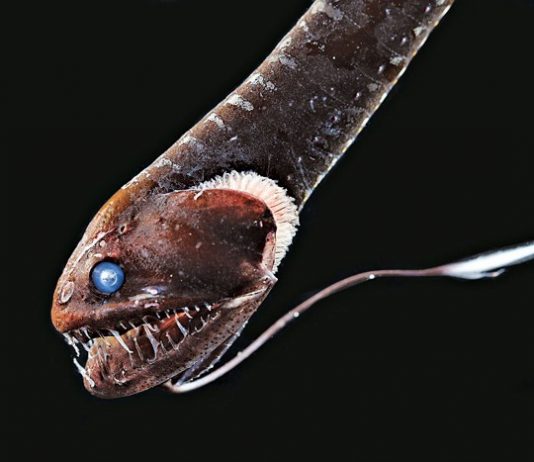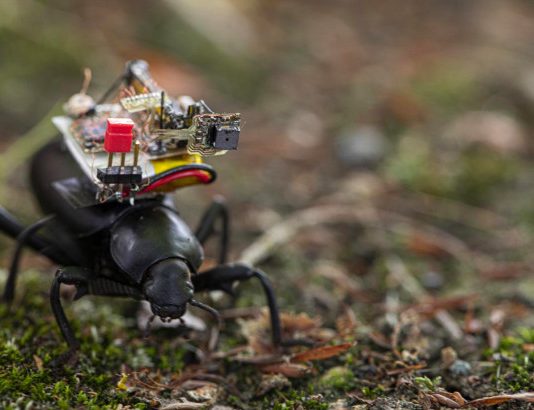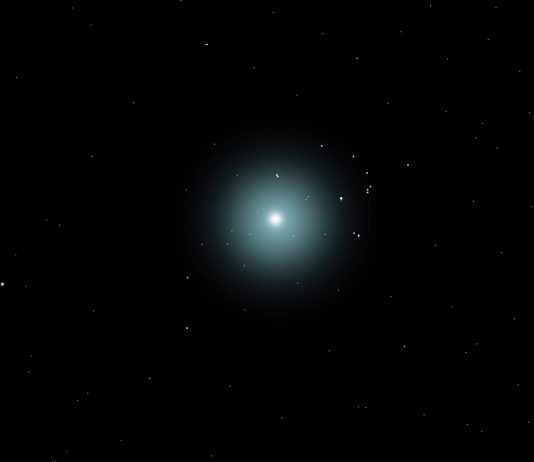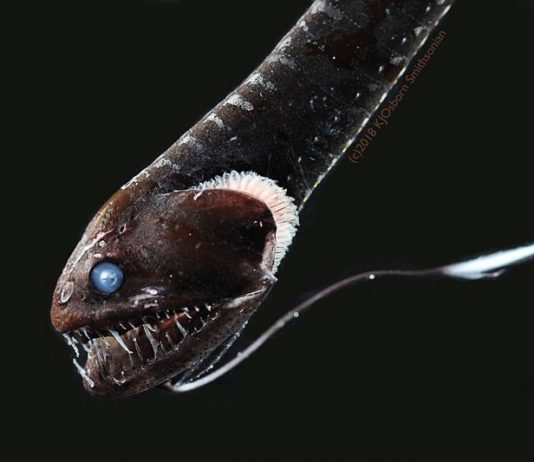In the darkest depths of the ocean, bioluminescence can make a creature stand out like a sore thumb—or tasty snack. Now, researchers have discovered that deep sea fishes have evolved a way to blend in using ultrablack skin. Their findings could inspire new synthetic black materials.
According to a study...
University of Washington scientists have developed a tiny, wearable camera that can be mounted on bugs.
This window into a bug's world weighs just 248 milligrams (8.7 ounces), researchers describe in a paper in Science Robotics, and can stream video at 1-5 frames a second to a mobile phone within...
A white dwarf star has been spotted hurtling through the Milky Way at 560,000 miles per hour thanks to a thermonuclear blast from a 'partial supernova', study found.
The star, a white dwarf with a relatively low mass for its kind, was first discovered in 2015 and is located about...
Scientists report that at least 16 species of deep-sea fish have evolved ultra-black skin that absorbs more than 99.5% of the light that hits them, making them nearly impossible to pick out from the shadows. These fish owe their disappearing act to tiny packets of pigment within their skin...
An international team including scientists from Cardiff University have provided a new estimate of the age of the universe, placing it at roughly 13.77 billion years old.
This new measurement, made using the Atacama Cosmology Telescope (ACT) in South America, adds a new twist to an ongoing debate over the...
In 2003, history was made. For the first time, the human genome was sequenced. Since then, technological improvements have enabled tweaks, adjustments, and additions, making the human genome the most accurate and complete vertebrate genome ever sequenced.
Although the current human reference genome is the most accurate and complete vertebrate...
Worldwide emissions of methane have hit the “highest levels on record”, according to an international team of scientists.
While the world has been focused on a global pandemic and widespread protests, another crisis is gathering in the atmosphere. And no, it isn’t carbon dioxide: It’s that other planet-warmer, methane, a...
Researchers say they may have discovered a new type of supernova explosion, which sent a white dwarf star tearing across the galaxy at 560,000 miles per hour.
The star in question is a white dwarf called SDSS J1240+6710, which was discovered in 2015. At the time, astronomers noted that the...
According to a sophisticated new model, the Moon is far younger than scientists previously thought — to the tune of some 85 million years.
The moon formed a little later than previously assumed. When a Mars-sized protoplanet was destroyed in a collision with the young Earth, a new body was...
From about two million years ago until around 10,000 years ago, the world was inhabited, at one and the same time, to several human species, one of the earliest being Homo erectus, who walked upright and were built like modern humans, and they eventually spread from Africa, across Europe...

































